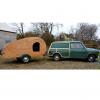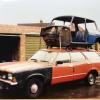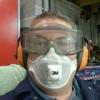Also worth noting that a decompression plate needs a head gasket on either side, so you need to factor in 2 x head gaskets + the decompression plate in your calculations
Agree with what you say, but just a note that, according to http://www.ferriday.co.uk/ not only don't decompression plates need two gaskets, it's actually a bad idea to use two. Especially in my case where the decompression plate would end up being almost zero thickness to get the CR required.
I suppose the main trouble with two gaskets (either fitted together or sandwiching a decompression plate) is heat extraction from the fire rings: when two gaskets are together each fire ring is only against one large and [relatively] cold piece of metal: the head or the block, instead of the head and the block. So heat is being conducted away from each fire ring at half the designed rate. Hence parts of the fire ring get hotter than designed, and fail quicker. We can get away with fitting two gaskets only because they're well over-designed, but we may've gone from being at (say) 45% of the design temperature to 90%... a massive decrease in the reserve. Similarly, sandwiching a thin decompression plate between two gaskets means the plate is thermally insulated from both the head and the block leaving it at risk of burning, whereas fitting it tight to the block pretty much thermally connects it to the block, cooling both itself and the side of the gasket it's against.
A secondary problem may be that the gaskets are designed to crush to different clamp pressures in different locations for the same crush distance. I can't get my head around whether or not doubling-up would result in less pressure than designed in the "squishier" parts of the gasket. (Logic says not - each gasket gets a 50% share of twice the crush distance... but intuition says that's wrong.) In any case I suspect this is less important than the heat-flow issues.


















